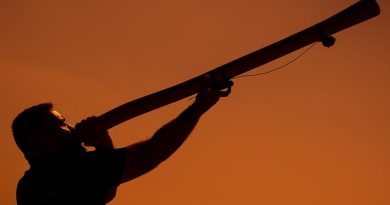Strengthening links in health chain

In the modern military, fitness is no longer just about sheer physical strength and endurance. It’s about creating well-rounded soldiers, sailors and aviators who are not only physically capable but also mentally resilient.
CAPTION: Warrant Officer Class One Bridget Pearce is a pioneering female physical training instructor at Lavarack Barracks, Townsville. Story by Flight Lieutenant Jessica Winnall. Photo by Corporal Guy Sadler.
Warrant Officer Class One (WO1) Bridget Pearce, a physical training instructor (PTI), is at the forefront of this transformation, challenging long-held stereotypes and promoting a more holistic view of health.
WO1 Pearce, based at the Mental Health and Wellbeing Branch, is seeking ways for people to more easily engage a PTI.
“I have spent my career advocating for a more inclusive definition of fitness that goes beyond mere physical prowess to include mental and emotional wellbeing,” WO1 Pearce said.
“By breaking down traditional stereotypes and fostering a more holistic approach, we can create a more supportive and effective military culture.”
WO1 Pearce said there was a critical connection between physical fitness and wellbeing, and that traditional gym settings caused anxiety for some people.
“Traditional military fitness programs often focus on rigorous physical exercises aimed at building strength and endurance, such as running long distances, lifting heavy weights and numerous repetitions,” WO1 Pearce said.
“We force our bodies of all types, sizes, ages and backgrounds into the same exercise, the same expectations.
“Fitness is a personal journey and everyone’s individual experience is valid and important. The gym can be intimidating to some people.
“Defence needs to take an empathetic approach. I encourage everyone to make time to talk to the physical training instructors about their concerns – fitness is not a one-size-fits-all concept.”
WO1 Pearce said functional fitness routines appropriate for all different body types and job requirements needed to be integrated, not only to enhance physical capabilities but also promote mental clarity, reduces stress and prevents injuries.
“We need to support people at every stage of their career. We need to support our APS colleagues, as well as those in uniform. We need to support people as they recover from injury, or from giving birth, or a myriad of other things,” she said.
She said physical fitness played a vital role in maintaining mental health, especially in high-stress environments like the military.
“The hope is to ensure that all members of Defence feel capable, confident and prepared, not just for the physical demands of their roles but to support ongoing overall wellbeing.
“In the Mental Health and Wellbeing Branch, our role is supporting the wellbeing of our personnel. I hope to support and empower our commanders to further understand and assist their personnel.”
.
.

.
.





